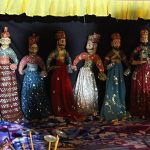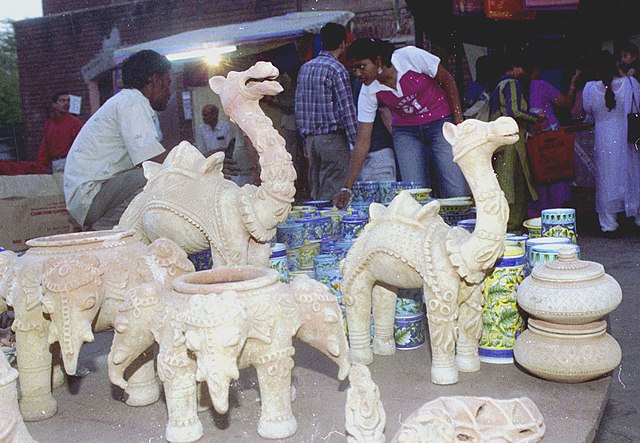
The story behind Kathputli is that a long time ago, a king ordered all the toys in his kingdom to be burned, including the beloved puppets of a group of wandering performers.
Pokhran pottery is a desert treasure shaping cultural narratives


In the midst of the vast Thar Desert in Rajasthan, India, the town of Pokhran is known for its historical fort and nuclear test site. However, another aspect of its rich cultural heritage lies in the art of pottery-making, an age-old tradition passed down through generations. Pokhran Pottery is a unique form of pottery that captures the essence of the desert, reflecting the region’s cultural diversity and artistic prowess. Pokhran Pottery received the Geographical Indication (GI) tag in 2015.
The history of Pokhran Pottery can be traced back to the Indus Valley Civilization, around 2500 BCE, when the art of pottery-making had already gained prominence. As a significant trading hub, Pokhran’s pottery attracted attention for its exceptional design, workmanship, and artistic appeal. Over time, the art form has evolved and adapted, integrating various influences and techniques while retaining its core identity and charm.
Creating Pokhran Pottery is a labor-intensive and meticulous process that starts with the careful selection and preparation of clay, which is collected from nearby riverbeds. The clay is mixed with sand and water, and then kneaded to achieve the desired consistency.
The potter shapes the clay using a traditional wheel, skillfully employing their hands and rudimentary tools to carve intricate patterns and designs. Once shaped, the pottery is left to dry under the sun for several days before being fired in a kiln at high temperatures. This not only strengthens the pottery but also imparts a unique reddish-brown hue.
Pokhran Pottery is recognized for its distinct designs and motifs that draw inspiration from the rich culture and traditions of Rajasthan. The designs often consist of geometric patterns, floral motifs, and scenes that capture the essence of everyday life. Earthy and vibrant, the color palette is dominated by shades of red, orange, and brown.
The range of Pokhran Pottery products includes pots, vases, bowls, plates, and decorative items like diyas (oil lamps), and animal figurines. Each creation is a testament to the artisan’s skill, creativity, and dedication to their craft.
In a world driven by mass production and global markets, Pokhran Pottery is striving to maintain its relevance and economic viability. Organizations and NGOs are stepping up to promote the art form, provide training and support to the artisans, and establish a market for their creations. The ban on plastic cups has also led to a renewed demand for clay cups.
Visitors to Rajasthan can contribute to the preservation of this art by purchasing genuine Pokhran Pottery and raising awareness about its cultural importance.
Image credit: Wikipedia Image URL under Government of India, licensed under the Government Open Data License – India (GODL).

The story behind Kathputli is that a long time ago, a king ordered all the toys in his kingdom to be burned, including the beloved puppets of a group of wandering performers.

The history of Mau saree can be traced back to the 16th century, according to historical records. During the Mughal period, weaving is said to have started. It was patronized by Jahanara Begum, the eldest daughter of Shah Jahan.

Van Gogh was known for his use of color and his bold, expressive brushstrokes. In “The Starry Night,” he uses thick, swirling strokes to create a sense of movement and dynamism in the sky, while the trees and buildings are rendered in starker, more angular strokes.